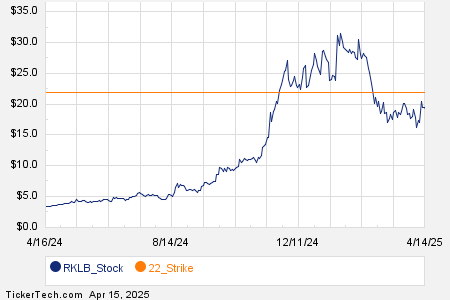Cocoa Prices Surge Amid Dollar Weakness and Demand Concerns
May ICE NY cocoa (CCK25) is up +373 (+4.61%), while May ICE London cocoa #7 (CAK25) has risen by +187 (+3.12%) today.
The cocoa market is experiencing a sharp rise in prices as the U.S. dollar (DXY00) dropped to a three-year low, leading to short-covering in cocoa futures. Despite this uptick, the British pound (^GBPUSD) reaching a one-week high appears to limit further gains in London cocoa, as a stronger pound negatively impacts cocoa priced in sterling.
Cocoa Market Reacts to Changing Demand and Supply Conditions
On Wednesday, cocoa prices hit a three-week low for NY cocoa and a five-month low for London cocoa due to fears that escalating global trade tensions could reduce consumer demand for cocoa products, particularly with tariffs pushing prices higher. Adding to the concerns, Barry Callebaut AG, a major player in the chocolate industry, lowered its sales guidance, citing high cocoa prices and tariff-related uncertainties.
Over the last two months, cocoa prices have been under pressure, with NY cocoa falling to a 4.75-month low on March 21 prompted by an improving supply forecast. The International Cocoa Organization (ICCO) announced on February 28 a projected global cocoa surplus of 142,000 MT for the 2024/25 season, marking the first surplus in four years. Additionally, ICCO anticipates a 7.8% year-on-year increase in global cocoa production to 4.84 million metric tons.
Inventory Recovery and Crop Conditions Impact Prices
The recent recovery in cocoa inventories has also contributed to negative price sentiments. After reaching a 21-year low of 1,263,493 bags on January 24, ICE-monitored cocoa inventories in U.S. ports rebounded to 1,868,177 bags, their highest level in five and a half months as of Wednesday.
Last Thursday, NY cocoa experienced a bounce to a one-and-a-quarter-month high due to indications of a subpar mid-crop harvest in West Africa. Rabobank’s analysis noted that delayed rains have hampered crop growth, with recent surveys of cocoa farmers in the Ivory Coast and Ghana revealing disappointing yields.
Supply and Demand Dynamics in Focus
Concerns regarding the forthcoming mid-crop in the Ivory Coast are contributing to support for cocoa prices. Historically smaller than the main crop, the mid-crop harvest typically begins this month, with current estimates for this year’s harvest at 400,000 MT—down 9% from the previous year’s 440,000 MT.
Ivorian cocoa exports have also slowed recently. Data released on Monday showed that farmers shipped 1.44 million metric tons of cocoa from October 1 to April 6, reflecting an 11% increase from last year, but a decline from the prior year’s 35% surge reported in December.
High Prices Affecting Demand
Demand concerns continue to pressure cocoa prices. Chocolate manufacturers Hershey and Mondelez have noted that elevated prices are impacting consumer demand. Mondelez’s CFO Zarmella indicated potential trends in North America showing reduced cocoa consumption, and the company forecasted that chocolate prices could rise by as much as 50% due to cocoa price surges, further dampening demand. On similar lines, Hershey stated it is adjusting recipes to replace cocoa with other ingredients due to high costs.
Adding to the bearish landscape, Nigeria reported a 27% year-on-year increase in cocoa exports for January, amounting to 46,970 MT, cementing its position as the fifth-largest cocoa producer globally.
High cocoa prices have also resulted in diminished demand in Q4, as reflected in quarterly grinding reports. The European Cocoa Association announced a 5.3% year-on-year drop in Q4 grindings to 331,853 MT—the lowest level in over four years. Similarly, the Cocoa Association of Asia reported a slight decline of 0.5% year-on-year to 210,111 MT, while the National Confectioners Association noted a 1.2% drop in North American grindings to 102,761 MT.
Forecasts on Ghana’s Supply Tighten Prices
Cocoa shortages from Ghana, the second-largest cocoa producer, are contributing to upward price pressures after Ghana’s cocoa regulator (Cocobod) revised its forecast for the 2024/25 harvest down to 617,500 MT, a 5% reduction from earlier estimates.
According to the ICCO’s February 28 report, the global cocoa deficit for the 2023/24 crop year is projected at 441,000 MT, the largest in over 60 years. The ICCO indicated a 13.1% year-on-year decrease in cocoa production for 2023/24, dropping to 4.38 million metric tons. Furthermore, the global cocoa stocks-to-grindings ratio has fallen to 27.0%, marking a 46-year low.
On the date of publication, Rich Asplund did not have any positions in the securities mentioned in this article. All information and data herein are for informational purposes only. Please review the Barchart Disclosure Policy here.
More news from Barchart
The views and opinions expressed herein are those of the author and do not necessarily reflect those of Nasdaq, Inc.


